Introduction
Identifying and addressing company weaknesses is not just a task; it’s a critical component for maintaining a competitive edge in today's dynamic business environment. Weaknesses can manifest in various areas, from inefficient processes and poor cash flow management to inadequate technology and high employee turnover rates. Real-world examples, like Astec Industries' ERP system overhaul and the Port of Tallinn's network infrastructure upgrade, highlight the significant improvements that can be achieved by tackling these issues head-on.
This article delves into practical strategies for recognizing internal weaknesses, implementing targeted improvements, and converting vulnerabilities into strengths. By employing a proactive approach and leveraging structured action plans, businesses can navigate challenges effectively and achieve sustained growth.
Understanding Company Weaknesses
Recognizing and tackling organizational weaknesses is essential for maintaining a competitive edge. Weaknesses can appear in various forms, such as subpar management practices, insufficient financial controls, a lack of skilled personnel, or outdated technology. For example, Astec Industries faced challenges as their 17 subsidiary companies each operated on different ERP systems, leading to data silos and inefficiencies. By centralizing their operational model under the OneAstec initiative, they were able to consolidate supply chain, inventory, and finance data into a single platform, improving decision-making and operational consistency.
Similarly, the Port of Tallinn, a major seaport in Estonia, faced growing pressures from increased service demands and digital innovations like video streaming and security systems. To maintain operational efficiency and eliminate downtime, they upgraded their network infrastructure to handle the higher bandwidth requirements, ensuring consistent functionality across their operations.
These real-world examples highlight the significance of identifying internal shortcomings and applying strategic solutions to improve overall business effectiveness.
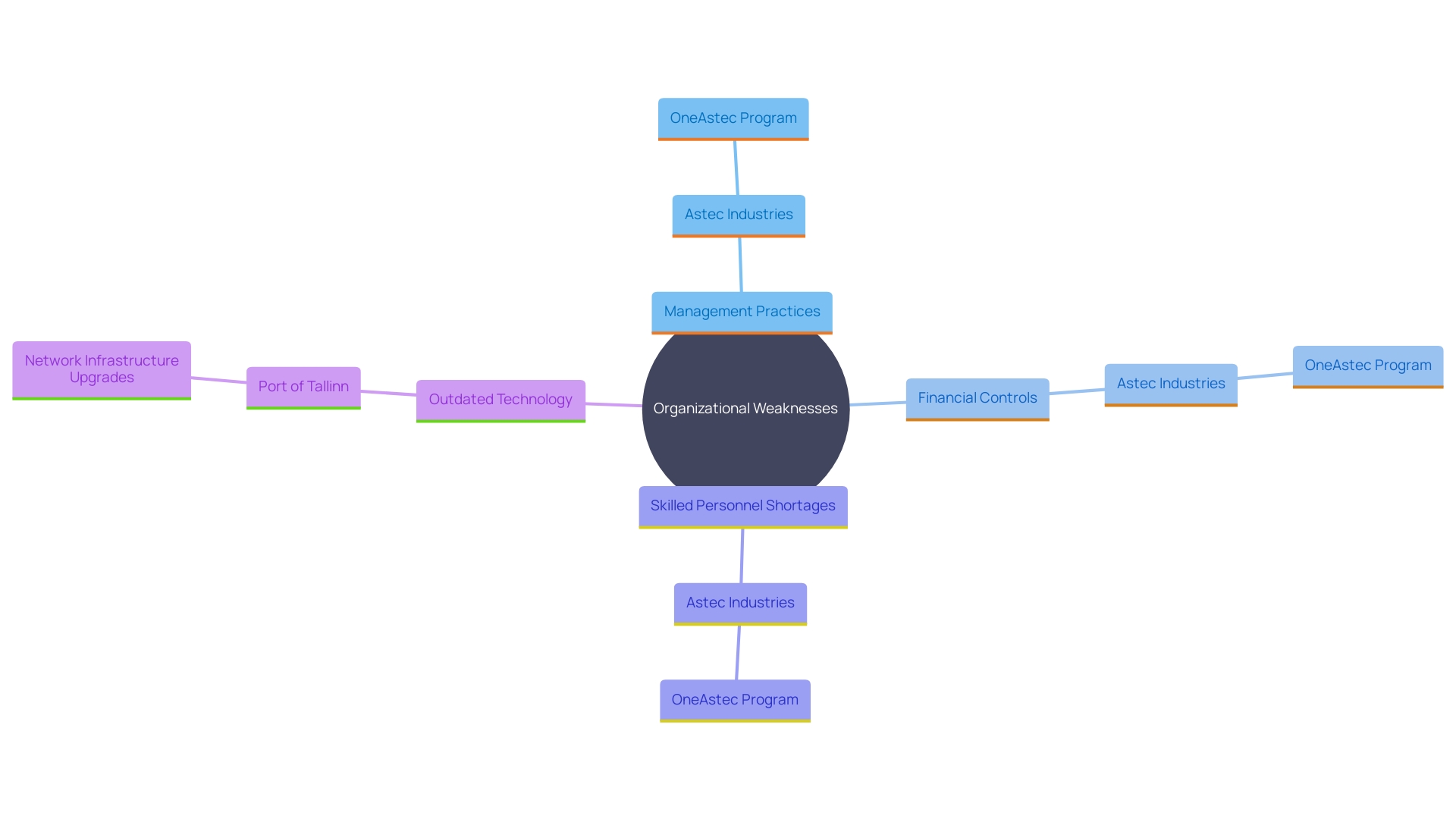
Identifying Internal Weaknesses
Identifying internal weaknesses begins with a thorough evaluation of your organization's operations. Utilizing techniques like employee surveys, evaluations, and financial audits is crucial for this process. Look for recurring issues, such as missed deadlines or budget overruns, which can highlight underlying problems. Engaging directly with team members can uncover additional areas for improvement. According to Greiner’s growth life cycle model, organizations must navigate through evolutionary growth phases and revolutionary crises to continue advancing. This model underscores the importance of resilience and continuous improvement in overcoming obstacles. As noted by industry experts, performance management should focus not only on measuring performance but also on improving it through distinct processes. This dual approach ensures that organizations can effectively advance to the next phase of development.
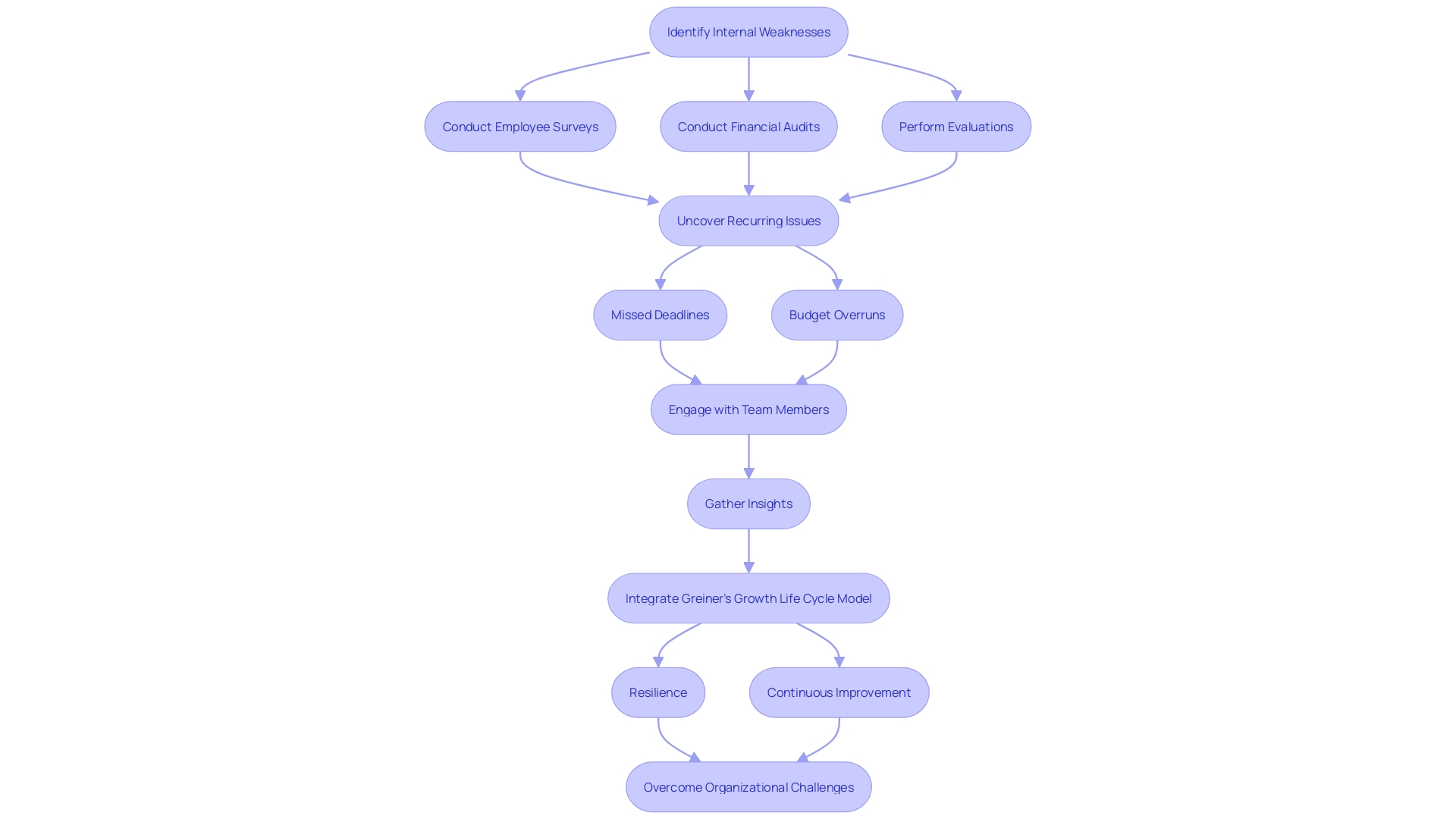
Examples of Company Weaknesses
Common examples of company weaknesses include:
- Inefficient processes that lead to wasted resources, much like the asset mismanagement seen in certain federal programs. Implementing inventory management tools can be crucial in optimizing resource utilization.
- High staff turnover rates, which often indicate a poor workplace culture. Addressing this can improve employee satisfaction and retention.
- Inconsistent cash flow management, which causes financial strain. A cash flow analysis can help identify areas for cost reduction and revenue forecasting, aiding in stabilizing finances.
- Limited marketing reach, which affects brand visibility. Expanding marketing efforts can enhance brand recognition and attract a broader audience.
Identifying these particular shortcomings enables focused approaches to enhance overall business performance.
Strategies for Improving Weaknesses
Once weaknesses are identified, it is essential to develop targeted strategies for improvement. This can involve several initiatives:
- Implementing Training Programs: Enhance employee skills through targeted training programs. Research has shown that continuous upskilling not only boosts employee productivity but also strengthens the organization's adaptability to change.
- Streamlining Operations: Use process re-engineering to make operations more efficient. A study on digital transformation initiatives highlighted the importance of continuously refining operational processes to maintain competitiveness and operational efficiency.
- Investing in Technology Upgrades: Upgrade technologies to improve overall efficiency. For instance, adopting advanced analytics and AI can provide actionable insights, optimizing decision-making and operational processes.
- Establishing Clear Communication Channels: Enhance teamwork by setting up robust communication channels. Effective communication is essential for promoting collaboration, which directly affects productivity and innovation.
Prioritize these actions based on their potential impact on overall performance. As Peter Drucker emphasized, leveraging strengths while tackling limitations allows organizations to navigate disruptions and emerge stronger.
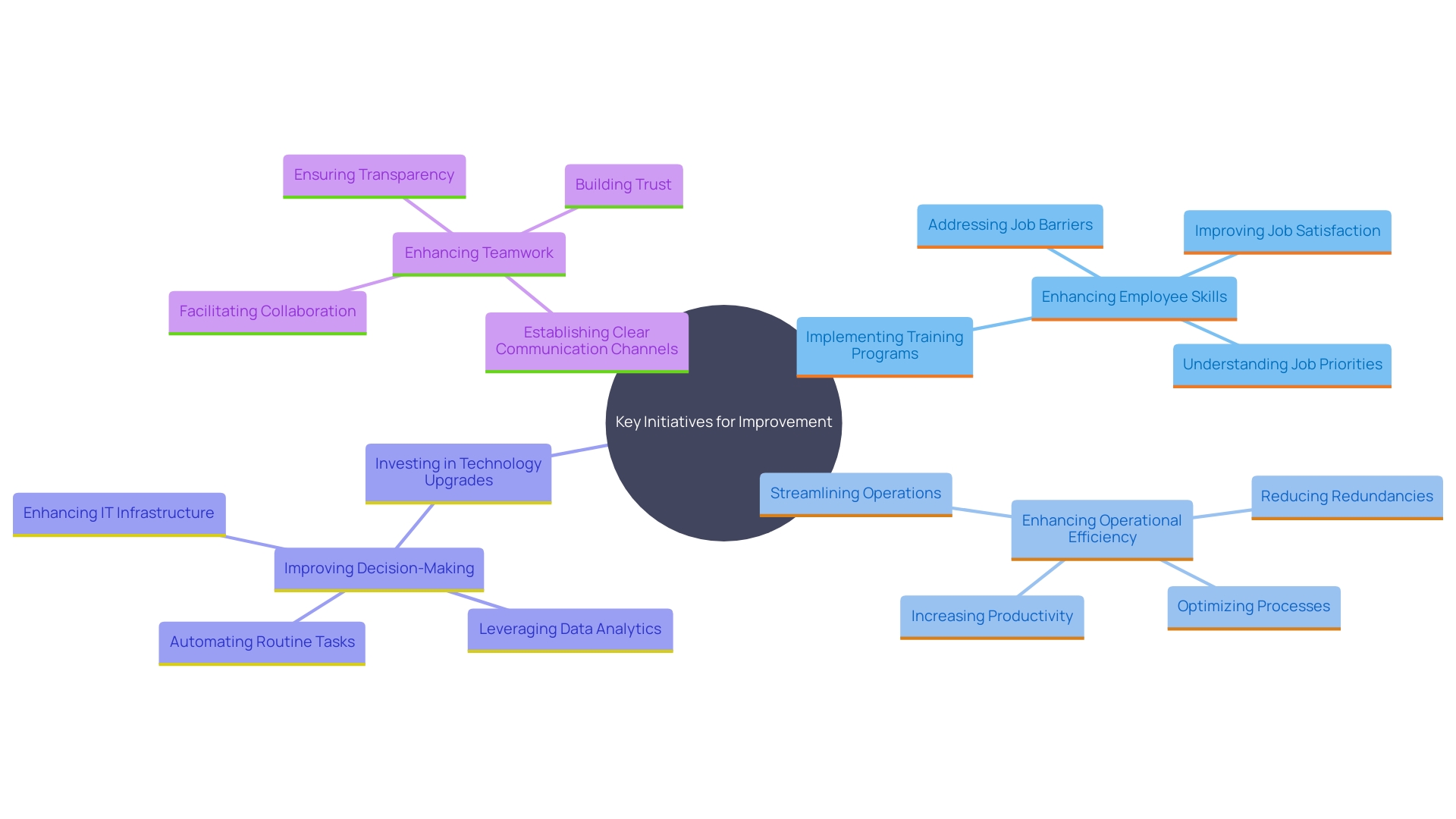
Converting Weaknesses into Strengths
Transforming weaknesses into strengths requires a proactive approach. For instance, high turnover rates can be mitigated by improving staff engagement and satisfaction. Conducting exit interviews to understand the reasons behind staff departures and implementing their feedback can create a more conducive work environment. According to the Society for Human Resource Management, engaged personnel significantly enhance customer satisfaction, company reputation, and overall stakeholder value. With 71% of employees globally being engaged, fostering a strong connection between staff and the organization is crucial.
Similarly, inconsistent cash flow can be addressed by developing a robust budgeting process and cash flow forecasting. Governments and organizations alike gain advantages from strategic cash flow forecasting and analysis to ensure financial stability. This encompasses grasping the essential components of cash flow analysis, assessing tracking tools, and employing intelligence software. Organizations that excel in cash flow management can allocate resources more efficiently and achieve higher ROI, making cash flow forecasting an indispensable tool for financial health and stability.
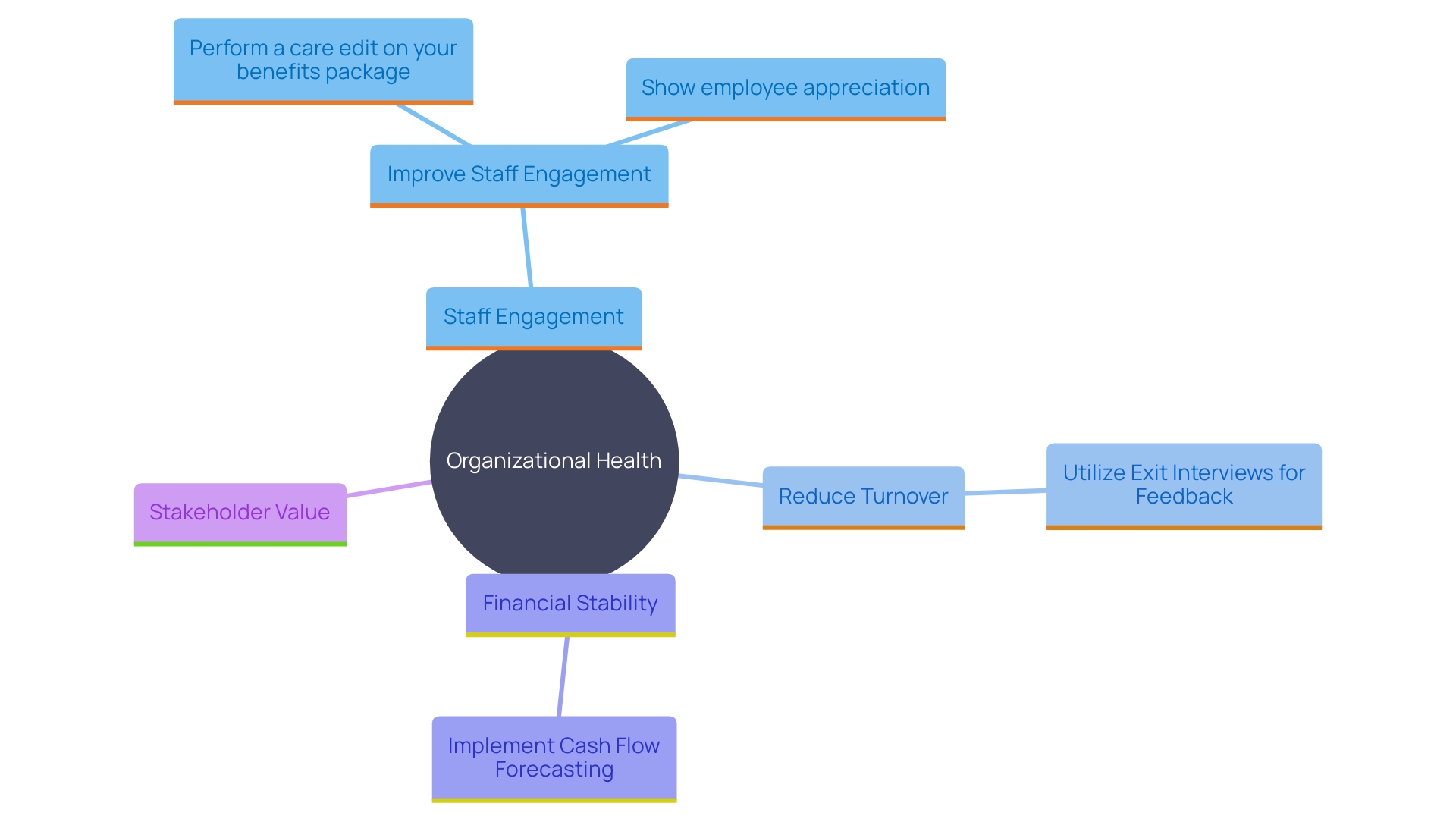
Addressing External Factors Impacting Weaknesses
External factors, such as market trends and economic conditions, can significantly amplify internal weaknesses. Staying informed about industry developments and competitor strategies is crucial. By conducting a SWOT analysis, organizations can identify how external threats might impact their vulnerabilities. This proactive approach enables companies to adapt their strategies, ensuring resilience in a changing landscape.
For example, the Port of Tallinn, one of Europe's fastest-growing seaports, faced significant challenges as it evolved into a modern, multifaceted enterprise. The increased demand for services and the addition of digital innovations like video streaming and security camera systems put immense pressure on the port's network bandwidth. Recognizing the need to enhance its network infrastructure, the port implemented solutions to increase capacity and eliminate downtime, thereby maintaining operational efficiency.
To navigate external threats effectively, companies must monitor valuation pressures, which can arise when asset prices are high relative to economic fundamentals. Elevated valuation pressures may increase the risk of significant drops in asset prices. By understanding and mitigating these pressures, organizations can better manage financial stability and growth. As one expert noted, 'A company must know how the market context is changing and use it to its advantage.' This awareness enables organizations to stay ahead of potential threats and maintain a competitive edge.
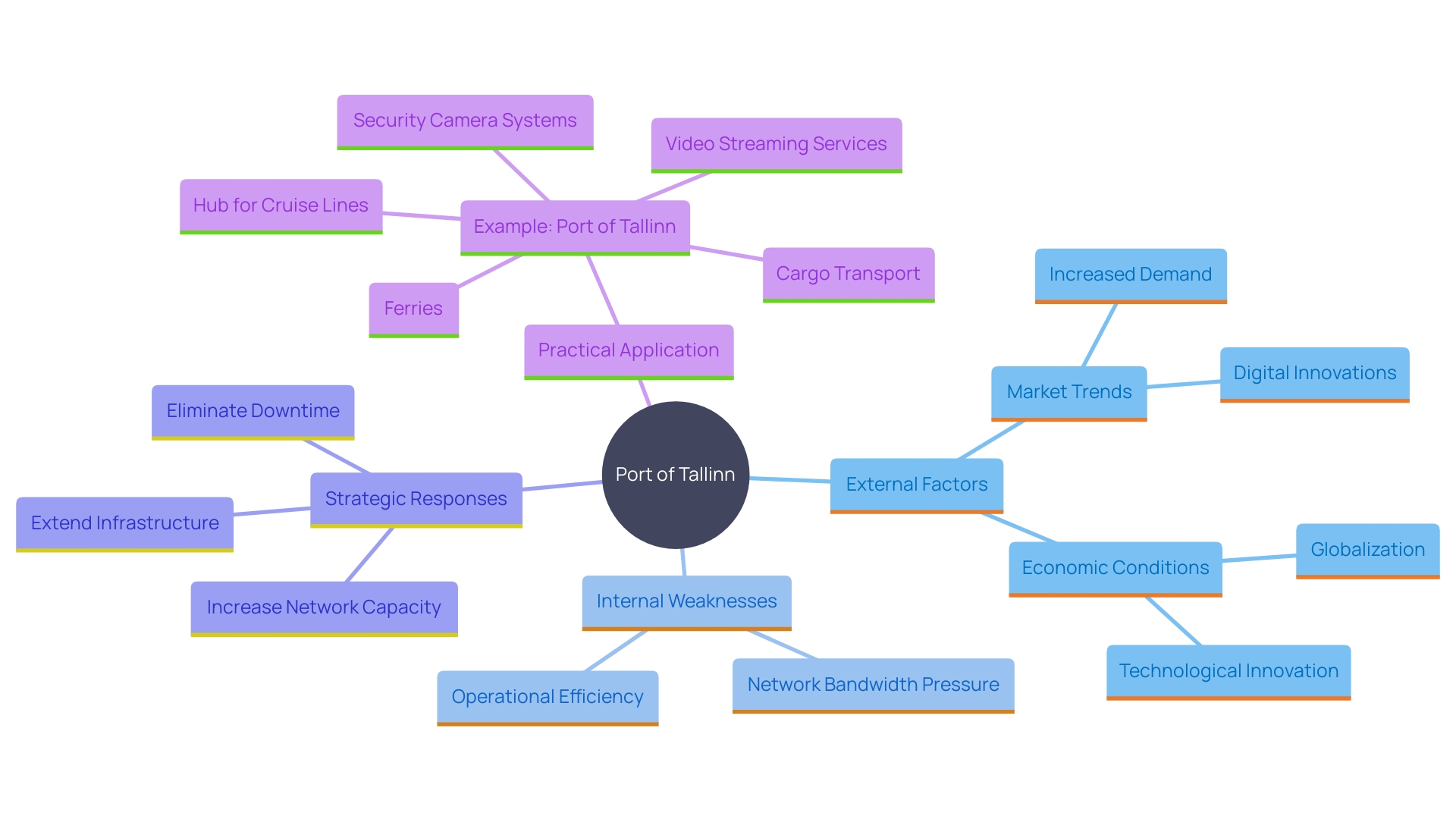
Creating an Action Plan for Improvement
Formulating a successful action strategy is crucial for tackling recognized shortcomings in any enterprise. Start by clearly outlining specific and measurable goals. Assign responsibilities to team members, ensuring that each task has a designated owner. Set realistic timelines to achieve these objectives, and establish concrete metrics for monitoring progress consistently. The project management life cycle, encompassing initiation, planning, execution, monitoring and control, and closure, provides a structured approach to this process.
Frequent evaluations and modifications of the strategy are crucial to guarantee ongoing enhancement and alignment with overall objectives. As Peter Drucker famously stated, “The productivity of work is not the responsibility of the worker but of the manager.” This underscores the importance of management in removing obstacles and facilitating progress. By following these steps, businesses can systematically address their weaknesses and leverage their strengths for sustained growth.

Conclusion
Identifying and addressing company weaknesses is vital for maintaining a competitive edge in today's business landscape. Recognizing internal weaknesses such as inefficient processes, high employee turnover, and inconsistent cash flow is the first step toward improvement. Real-world examples, like Astec Industries and the Port of Tallinn, illustrate how targeted strategies can transform vulnerabilities into strengths.
Implementing a structured approach to improvement—through training programs, operational streamlining, technology upgrades, and clear communication—can significantly enhance organizational performance. Continuous evaluation and adaptation are essential to ensure that strategies remain effective in addressing weaknesses.
Moreover, understanding external factors such as market trends and economic conditions is crucial for effectively managing vulnerabilities. Conducting SWOT analyses can provide insights into how external threats impact internal weaknesses, enabling companies to adapt and thrive.
Creating a comprehensive action plan with measurable goals and regular progress reviews empowers organizations to systematically tackle weaknesses. By fostering a culture of resilience and continuous improvement, businesses can not only address current challenges but also position themselves for sustained growth and success.




